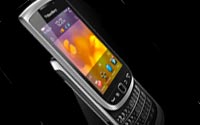 With the spread of smartphones,
more people are embracing a range of mobile content and services. A new Forrester report urges marketers to keep up with consumers and to spend more time in mobile to build brand awareness and
interaction on handheld devices.
With the spread of smartphones,
more people are embracing a range of mobile content and services. A new Forrester report urges marketers to keep up with consumers and to spend more time in mobile to build brand awareness and
interaction on handheld devices.
The research firm estimates that roughly four in 10 U.S. adults now have a smartphone, setting the stage for the upswing in mobile media consumption. The share
of people downloading an app, for instance, increased to 15% from 7% between 2010 and 2011. The proportion of those researching products has doubled to 10%, while that for actual mobile purchases has
doubled to 4%.
Among other activities, 41% are receiving text messages, up from 34% a year ago, and 23% are checking the news/sports/weather on their phones compared to 14% last year. The
Forrester survey conducted in the third quarter of 2011 involved more than 8,000 U.S. adults who owned both feature phones and smartphones.
advertisement
advertisement
The report recognizes that most companies are still
at an early stage of mobile marketing -- mostly testing and repurposing existing creative for mobile campaigns. To help brands see where they stand, Forrester outlines five phases of mobile
marketing evolution: foundation, experimentation, device strategy, channel strategy, and comprehensive strategy.
Wherever a company is, the study argues that any mobile execution should meet
three principal criteria: immediacy, simplicity and context.
Immediacy emphasizes the timeliness of content delivered to consumers via mobile. Forrester points to a Hilton Hotels effort that
sent SMS notification of instantly redeemable on-site specials to customers, and Home Depot’s use of 2D barcodes on product labels to provide more information.
Keeping things simple is
also key in mobile, given the smaller screen and usually lower bandwidth than on a PC. That means reducing steps for consumers to complete tasks and using features like apps and the camera to connect
users with content. Robitussin, for instance, partnered with TribalDDB for the “Robitussin Relief Finder” campaign, which included a branded app that enables users to match symptoms to the
relevant Robitussin product.
As a more personal device than the PC, the mobile phone has features that allow marketers to tailor messages according to a user’s location in real-time
and based on past behavior. Dunkin’ Donuts worked with mobile ad network Where to include the address and distance to the nearest location in its mobile banner ad. Virgin America partnered
with geosocial app vendor Loopt to push deals from nearby stores to travelers in its new SFO terminal.
Privacy concerns about location-tracking via mobile, however, have also prompted
legislation in the last year. Sens. Al Franken (D-Minn.) and Richard Blumenthal (D-Conn.) last year introduced the Location Privacy Protection Act, requiring that companies obtain users' consent
before collecting location data or sharing the information with third parties.
The Mobile Marketing Association in October released new privacy guidelines for app developers that outline best practices and provide sample
language for privacy policies.